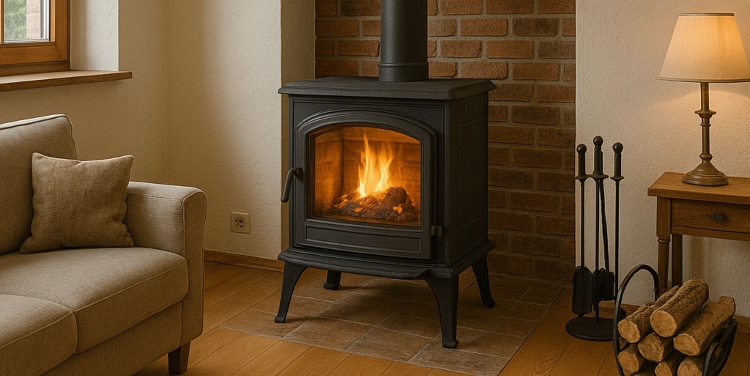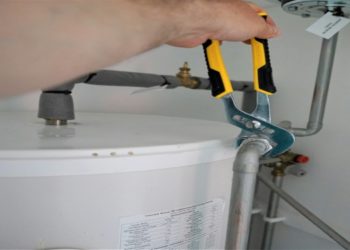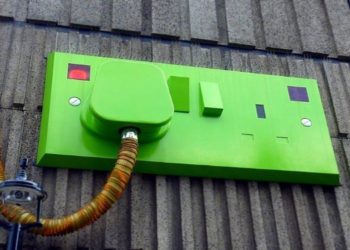Rising numbers of British households are taking matters into their own hands this winter, installing wood burning stoves without professional help as energy prices continue to bite
The home improvement landscape is shifting dramatically as more homeowners discover that installing a wood burning stove is far more straightforward than previously assumed. What was once considered strictly tradesmen’s territory has become an increasingly popular weekend project for competent DIY enthusiasts across the UK.
Industry figures suggest that nearly 40% of wood burner installations are now carried out by homeowners themselves, a significant increase from just 15% five years ago. The combination of readily available guidance, improved product design, and the substantial cost savings involved has transformed attitudes towards self-installation.
The Financial Case Grows Stronger
With energy prices remaining stubbornly high despite recent market fluctuations, the economics of wood heating have never been more compelling. A typical household can reduce their heating bills by £600 to £900 annually by installing a wood burner, according to recent consumer surveys. When professional installation costs can easily exceed £1,500, the appeal of a DIY approach becomes obvious.
“We were quoted nearly two grand for installation alone,” says Manchester resident Sarah Thompson, who fitted her own 5kW stove last autumn. “After watching a few tutorials and reading through the regulations, I realised it was completely manageable. The whole thing took a weekend, and we’ve already saved enough on heating to make it worthwhile.”
The savings extend beyond the installation itself. Wood fuel remains considerably cheaper than electricity or gas per kilowatt hour, particularly for those with access to seasoned logs or who prepare their own firewood. Many rural homeowners report heating costs dropping by more than half after switching to wood.
Understanding the Regulations
One factor that often deters potential DIY installers is the perception that building regulations are impossibly complex. Whilst compliance is absolutely essential, the actual requirements are more accessible than many assume.
In England and Wales, installing a wood burning stove is notifiable building work under Approved Document J. However, homeowners have two straightforward routes to compliance. The first involves notifying your local building control department before starting work, paying the relevant fee, and arranging inspections. The second, often simpler option is using products listed under the Competent Person Scheme, which can significantly streamline the approval process.
Scotland and Northern Ireland have their own specific regulations, but the principles remain similar. The key is understanding what’s required before you begin, not discovering halfway through that you need additional approvals.
“The regulations are there for good reason,” explains heating engineer Mark Davidson, who now runs courses for DIY installers. “But they’re not designed to be barriers. If you can follow instructions and work methodically, there’s nothing stopping a careful homeowner from doing this properly.”
The Technical Reality
Modern stove systems are designed with installation in mind. Log burners now come with comprehensive instructions, and the components are standardised across most manufacturers. Twin wall flue systems have particularly simplified the process, offering better safety margins and often removing the need for complex calculations about clearances to combustible materials.
The basic process involves several manageable stages. First, you’ll need to prepare the installation area, ensuring adequate hearth protection and that wall clearances meet requirements. Next comes positioning the stove itself, which is straightforward provided you’ve measured accurately. Connecting the flue pipe follows logical principles, and modern twist-lock systems make secure connections simple to achieve.
The most technically demanding aspect is typically making the penetration through the roof or wall, but even this is well within the capabilities of someone comfortable with basic building work. Flashing kits are now designed for DIY installation, and the materials needed are available from specialist suppliers.
Choosing the Right Equipment
Selecting appropriate equipment matters enormously for DIY success. Wood burners vary considerably in their installation requirements. Smaller stoves rated under 5kW may not require additional ventilation in newer properties, whilst larger models have specific air supply requirements that must be met.
The flue system deserves particular attention. Twin wall insulated flue pipe offers significant advantages for self-installers, providing built-in safety through its insulated design and allowing for shorter clearance distances. Single wall pipe is cheaper but requires more careful positioning and greater clearances.
Height calculations for the flue terminal matter for both safety and performance. The general rule requires the outlet to be at least 600mm above the roof ridge or highest point within 2.3 metres, but specific circumstances may vary. Getting this right ensures proper draw and prevents smoking issues.
Common Pitfalls to Avoid
Experience from thousands of DIY installations highlights several recurring mistakes. Inadequate hearth protection tops the list, with regulations specifying exact dimensions that must be met. The hearth must extend at least 300mm beyond the sides of the stove and 500mm to the front. Non-combustible materials are mandatory, and simple tiles over wooden floorboards won’t suffice.
Another frequent error involves underestimating the importance of proper sealing. Every joint in the flue system must be sealed correctly to prevent smoke leakage. This isn’t difficult, but it requires attention to detail and the right materials.
Ventilation requirements catch many people out. Even if your stove is under 5kW, you may need additional ventilation depending on room volume and building air tightness. This is particularly relevant in modern, well-insulated properties.
The Installation Process
Wood burning stove installation typically takes a competent DIYer between one and three days, depending on the complexity of the flue run. Starting early and working methodically produces better results than rushing.
Begin by assembling all materials and tools before starting. Nothing derails progress faster than discovering you’re missing a crucial component halfway through. Check everything against the installation instructions, and don’t hesitate to contact suppliers with questions beforehand.
Most installers recommend doing a dry fit of the entire system before making any permanent fixings. This allows you to identify any issues with alignment or clearances before committing to drilling holes or making structural changes.
The actual installation day should start with the hearth preparation if needed, followed by positioning the stove and working upwards with the flue system. Taking photographs at each stage provides useful documentation for building control and helps if you need to troubleshoot later.
The Satisfaction Factor
Beyond the financial savings, many DIY installers report genuine satisfaction from completing the project themselves. There’s something particularly rewarding about heating your home with a system you’ve installed personally.
“Every time I light it, I feel pleased with what we achieved,” says Thompson. “It’s not just about the money saved. It’s knowing that you’ve done something substantial to improve your home, and done it properly.”
As winter approaches and energy costs remain a concern for millions of households, the trend towards DIY wood burner installation shows no signs of slowing. With the right preparation, appropriate equipment, and careful attention to regulations, it remains one of the most accessible ways for homeowners to take control of their heating costs whilst adding genuine value to their properties.
The message is clear: with proper research and a methodical approach, installing your own wood burning stove is an achievable project that delivers lasting benefits.
David Prior
David Prior is the editor of Today News, responsible for the overall editorial strategy. He is an NCTJ-qualified journalist with over 20 years’ experience, and is also editor of the award-winning hyperlocal news title Altrincham Today. His LinkedIn profile is here.













































































